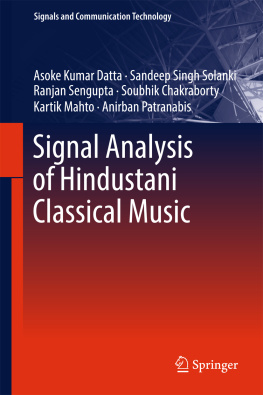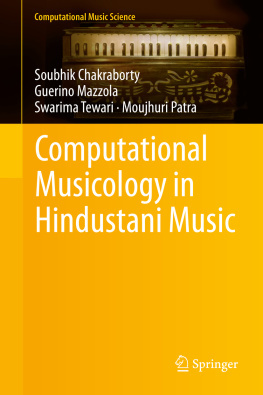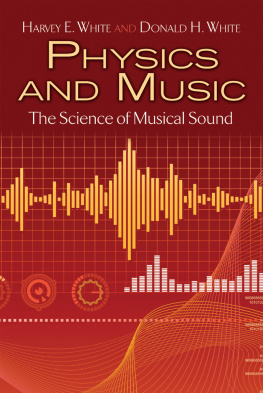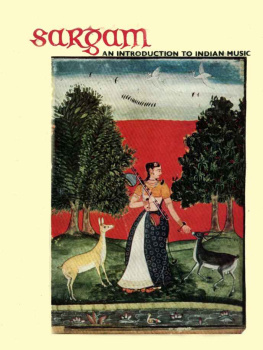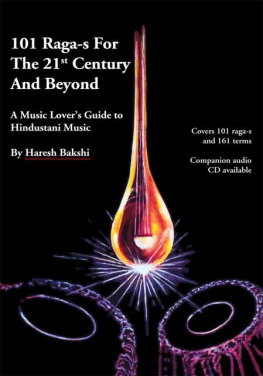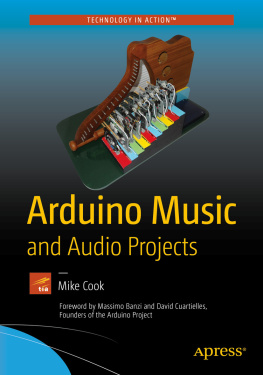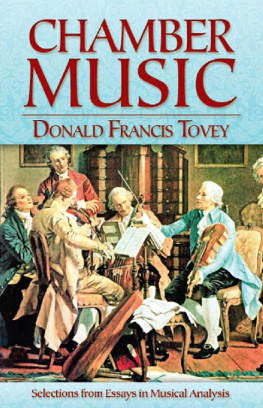1.1 What Is Music?
Murmur of trees, singing of the birds, tinkling streams, patter of rain drops on tin roof, strumming the strings, ringing of cow bells of returning herds under the evening sunall these soothe us. Add to these products of nature, the art of humans producing songs and instrumental tunes. We all perceive these as music. Natural sounds existed before human beings appeared on earth. Was it music then or was it just mere sounds? Without an appreciative mind, these sounds are meaningless. So music has meaning and music needs a mind to appreciate it. Defining music is not easy. Some say that music is organized sound (and silence). But speech, mating calls of animals are also organized sounds. Some others say that a sequence of sound the meaning of which the recipient experiences with his mind, feelings, senses, will, and metabolism is music. But so is the speech or even the sounds of a lightning or a roar of a tiger nearby.
A good definition must be simple and relatively unambiguous. Let us define music as an acoustical emotive and co - operative communication, universal in nature . The simultaneity of the three elements acoustics, emotion, and universality is integral to the definition. The universality implies that it is not culture specific. Tigres roar is not co-operatively emotive. Speech, mating calls are very culture specific and therefore not music. Speech has the disadvantage in that, unless the language is known to the receiver, everything will be Greek and Latin. On the other hand, music is universal in nature. Music is a form of auditory communication between the creator and the recipient. One of the differences with speech is that speech primarily transmits message. The emotion comes out later on the semantic interpretation of the message. In contrast, music primarily communicates emotion. Music is also relative and subjective. What is music to one person may be noise to another. Speech, however, has one advantage over music. When speech is translated from one language to another, it is possible to preserve the meaning. But when music of one region is adapted and used in another, often the context and meaning change (Patel ). Thus musical notes can be easily identified simply by looking for stability of the corresponding fundamental frequencies (which determine the pitch). Another point of difference between the two signals lies is rhythm which, in general, is found to be more dominant, formal and repetitive in music than in speech. Rhythm arises when anything occurs periodically and to detect it one needs to take a close look at the inter onset interval (IOI) graph of the phenomenon, be it musical notes or beats in a percussion instrument or words in a poem. We conclude this section with a quote:
Words make you think a thought .
Music makes you feel a feeling .
A song makes you feel a thought .
EY Harburg.
1.2 Origin of Music
The word music comes from the Greek word mousik meaning any of the arts or sciences governed by the Muses. Of the nine Muses, daughters of the God Zeus, only Euterpe, Terpsichore and Polyhymnia can be related to what we broadly understand as music. In India Sangeet leads to the word Samgeet which means singing together. Narada the Hindu idol of music used Vina as an accompaniment. In Vedas music began as a choral chant while older communities each had their own music. If one looks at the full panorama of music in the world the solo performance would constitute only a miniscule. A significantly larger portion is occupied by the collective performances.
Those who look at the origin of music as an evolutionary necessity suggests four primary needs e.g. survival, territorial, sexual and motherese (mother-infant relationship). This last one may push back the origin of music to the lullaby of Neanderthal mothers. About 300,000 years ago, Neanderthals possibly have had proto-musical ability. Some argue that music and speech have evolved by differentiation of early proto-human voice sounds Hmmm (Holistic, multi-modal, manipulative and musical). The development was facilitated by vertical posture and walking, which required sophisticated sensorimotor control, a sense of rhythm, and possibly including the ability for dancing. Instrumental music dates back at least around 37,000 years (which is the age of the oldest uncontested bone flute found at Geissenklsterle in Germany). It is likely though that instrumental music is much older, considering that instruments such as drums or rattles were made of perishable materials and the archaeological evidences are difficult.
Another way to look back in the past into the origin of music is to fall back on the theory of intentionality of music. Some say that the ability to reflect about the past and the future is a necessary ingredient of intentionality and the age when human being manifested this ability is between 60,000 and 30,000 years ago when they started creating art forms. If we take a cue for survival strategy from the theory of evolution of life every culture has to adapt to the changing environment, change brought about through interaction with other powerful cultures. These intercourses need not be seen with suspicion. In fact, this is the only way to evolve and therefore to survive. For evolving and survival, it is very necessary to analyse transparently and without bias. For this modern civilization provides a plethora of knowledge tools in disciplines from psychology to information technology. As of now these evolutionary necessities are extinct. Now music has only one common primary need, entertainment. This need is very culture specific. In this era of globalization, every culture is under a considerable strain to survive. India being a country with extensive diversity, every community has its own culture and own music. All of them, starting from Bhadur Gaan from a Bengal village to Classical Music in India, are fighting to survive.
1.3 Indian Music
The earliest evidence of music in India can be traced back to old cites of Indus civilisation. Earliest finds are two and three stringed instruments dated about 2000 BC from Lothal located in the Bhl region of the modern state of Gujartand. The Indus Valley civilization died with the arrival of the Aryans, who descended into India from the northwest in the first half of the 2nd millennium BC. An important aspect of Aryan religious life was the bard-priest who composed hymns in praise of the gods, to be sung or chanted at sacrifices. This tradition was continued in the Aryans new home in northern India until a sizable body of oral religious poetry had been composed.
This body of chanted poetry grew to massive proportions, and the best of the poems were compiled as an anthology called Rigveda . The Rigveda came into being between 1500 BC and 500 BC. The hymns of the Rigveda , the oldest Veda , are addressed to the elements of nature personified as deities, and are prayers for protection from calamities and for attainment of prosperitymaterial as well as spiritual.

